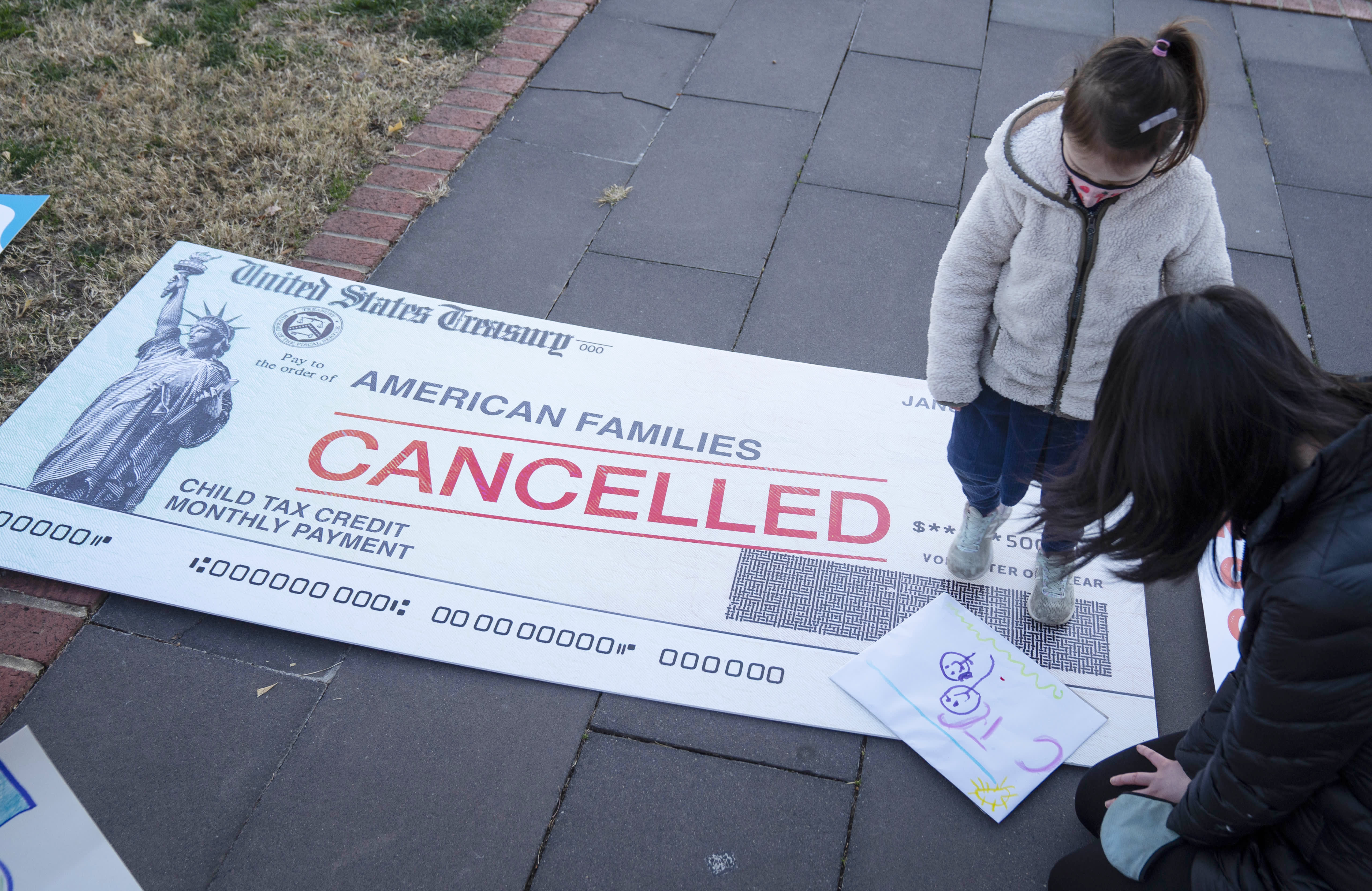When President Joe Biden delivers his State of the Union address on Tuesday, he may tout the benefits of a pending social spending package that could deliver more money to Americans.
Biden may propose extending the expanded child tax credit that came with monthly payments of up to $300 per child to eligible families last year.
Those checks stopped in January, because the payments were only authorized for 2021.
Thus far, Democrats have failed to pass to the Build Back Better package through a simple majority, which would expand the maximum credit of $3,600 per child under age six and $3,000 for children ages 6 through 17.
More from Personal Finance:
Your 2021 child care costs could mean an $8,000 tax credit
Parents face a surprise ‘kiddie tax’ bill if children are trading stocks
Here’s what every taxpayer needs to know this season
Families who are eligible for the expanded credit may see more money come to them when they file their taxes this year, as just half of the total child tax credit was sent via monthly payments.
However, for 2022, the credit has reverted back to $2,000 per child with no monthly payments.
Washington lawmakers may still revisit expanding the child tax credit. But the changes they may make could look a lot different than the aid put in place last year.
“The pandemic relief arguments for the child tax credit are no longer there,” said Erica York, economist at the Tax Foundation. “Now this is about do we want to make this fundamental change to the child tax credit long-term.”
Work requirements up for debate
The Build Back Better plan proposes making the child tax credit fully refundable, which means that families with little to no earnings would still qualify for the benefit.
Prior to the implementation of the expanded child tax credit, the credit phased in at 15% of earnings over $2,500, based on the Tax Cuts and Jobs Act of 2017. Every $1 above that threshold gets matched with 15 cents of the child tax credit, York said.
Estimates have found that the full refundability provided through Build Back Better – along with the higher total sums per child – could reduce child poverty by more than 40%, according to the Center on Budget and Policy Priorities. Full refundability would account for 87% of that.
Research from Columbia University found 3.7 million children fell into poverty after the monthly child tax credit payments stopped.
American families have just been sitting on the sidelines watching the in party and across party bickering without any tangible progress.Shai Akabasdirector of economic policy at the Bipartisan Policy Center
Yet some lawmakers, particularly Sen. Joe Manchin, D-W.V., have said they want the credit tied to work requirements.
Sen. Mitt Romney, R-Utah, is working on a child tax credit proposal with work provisions that he hopes can attract bipartisan support.
Some experts have taken issue with adding work incentives.
The first question people need to ask is whether the expanded credit is intended for adults or for children, according to Elaine Maag, senior fellow at the Urban-Brookings Tax Policy Center.
“If they are truly intended for children, then the work requirement makes less sense,” Maag said.
Moreover, if parents lose work and therefore their income from an expanded child tax credit, that would be “piling onto a bad situation,” she said.
There are ways that lawmakers may split the difference, with a portion being fully refundable and eligible to all parents, and a second part that is phased in with income, according to Shai Akabas, director of economic policy at the Bipartisan Policy Center.
The Bipartisan Policy Center has come up with its own middle-of-the-road proposal aimed at encouraging a policy both sides of the aisle could sign onto.
“I think that is where the realistic path forward lies in terms of getting this enhanced tax credit renewed and making it available for families again,” Akabas said.
Timing uncertainty
Any new credit that is enacted likely will not be as generous as the one that was temporarily put in place last year, Akabas said.
What’s more, the timing of when the child tax credit may be expanded again is currently up in the air.
“I’m guessing we don’t see real movement on this until closer to summer, maybe May or June,” York said, as Congress has other priorities, such as funding the government or a bill aimed at regulating economic competition from China.
Lawmakers may aim to get something done before the November mid-term elections.
However, child tax credit changes may also get lumped in with provisions called extenders that are revisited each year.
For parents, that will mean a longer wait before any monthly payments possibly restart.
“American families have just been sitting on the sidelines watching the in party and across party bickering without any tangible progress,” Akabas said.
